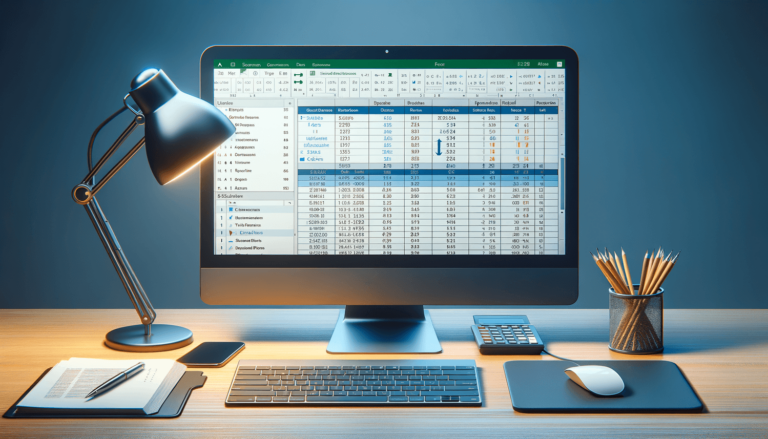

Welcome to our blog post on how to use structured references in Excel. If you have ever struggled with finding the correct cell reference when working with tables, structured references will make your life a lot easier. Structured references are a way of using meaningful names to refer to different parts of a table, making formulas and functions more user-friendly and easier to read. In this post, we will guide you through the basics of structured references and explore some common uses, so you can start utilizing this tool to its full potential.
Structured references are a feature in Excel that allows you to use meaningful names to refer to different parts of a table. Instead of using traditional cell references, such as A1 or B2, structured references use the table headers to refer to specific cells or ranges within a table.
Using structured references has a number of advantages over traditional cell references:
Here’s how you can start using structured references in your Excel sheets:
To use structured references, you need to have a table in your worksheet. To create a table, select the data range you want to turn into a table and go to the “Insert” tab in the ribbon. Click the “Table” button and follow the prompts to create your table.
To use a structured reference in a formula, start typing the formula as you normally would, but instead of typing a cell reference, type the table name followed by the column header name in brackets. For example, instead of typing A1, you would type Table1[Sales].
You can also use structured references in data validation to create dropdown lists that are automatically updated when you add or remove values from your table. To do this, create a named range using a structured reference, and then reference that named range in your data validation dropdown list. For example, to create a dropdown list of product names from your table, create a named range called “Products” using the following formula: =Table1[Product]. Then, reference this named range in your data validation settings.
Structured references are a powerful feature in Excel that can make your life a lot easier when working with tables. By using meaningful names to refer to different parts of your table, you can create more flexible and user-friendly formulas and functions. With the steps outlined in this post, you can start using structured references in your own worksheets today!
While structured references are a great feature to use in Excel, there are some best practices that will help you get the most out of them:
Structured references can be a bit tricky to get used to at first, and there are some common mistakes that can trip you up:
You can also use structured references when creating pivot tables in Excel. When creating a pivot table, Excel automatically creates a range name for your table, based on the name you gave it when you created the table. You can use this named range in your pivot table formulas and functions instead of using traditional cell references.
If you’d like to learn more about how to use structured references in Excel, there are a number of great resources available online:
Here are some frequently asked questions about using structured references in Excel:
You can use virtually any formula or function with structured references, including SUM, AVERAGE, IF, and VLOOKUP, to name a few.
No, you can still use traditional cell references in your formulas if you prefer. However, using structured references can make your formulas easier to read and understand, especially if you have a lot of data in your table.
Yes, you can create structured references for both rows and columns by using the table headers to reference specific rows or columns in your formulas.
Select any cell in the table and go to the “Table Tools” tab in the ribbon. Click the “Delete” button to delete the entire table.
Yes, Excel for Mac supports structured references, so you can use them in your formulas and functions just like you would in Excel for Windows.
Explore the world of Microsoft PowerPoint with LearnPowerpoint.io, where we provide tailored tutorials and valuable tips to transform your presentation skills and clarify PowerPoint for enthusiasts and professionals alike.

Your ultimate guide to mastering Microsoft Word! Dive into our extensive collection of tutorials and tips designed to make Word simple and effective for users of all skill levels.

Boost your brand's online presence with Resultris Content Marketing Subscriptions. Enjoy high-quality, on-demand content marketing services to grow your business.
